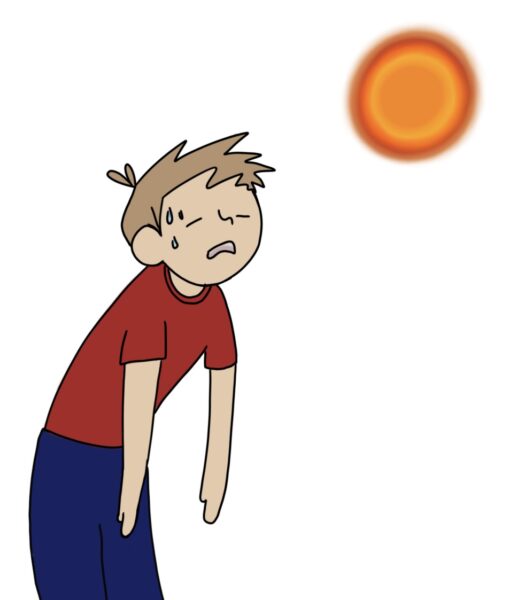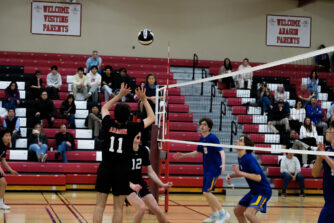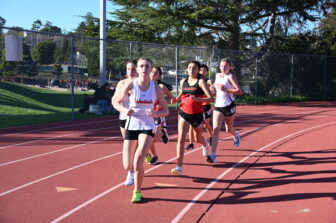
Audrey Wang
Over the summer, California passed new laws that updated the guidelines schools must follow regarding athletes participating in sports in the heat. As per California State Law Assembly Bill No. 1653 and California Interscholastic Federation Bylaw 503. K, all member schools must abide by the CIF Heat Illness Prevention and Heat Acclimatization Policies. The key aspect of these policies is the extreme heat procedures, which limit the amount of physical activity athletes can engage in depending on the temperature.
The new guidelines are divided into five “wet bulb” temperature categories. Since wet bulb temperatures are equivalent to the temperature when the humidity is 100%, the actual ceiling temperatures are usually higher than stated. In the green category (below 76.1°F), athlete activity is unrestricted. The yellow category (76.3°F to 81°F) requires caution with intense exercise, and coaches must provide three breaks of at least four minutes each hour. The orange category (81.1°F to 84°F) limits practices to two hours with four breaks of four minutes each, allowing football players to wear only helmets, shoulder pads, and shorts. In the red category (84.2°F to 86°F), games are allowed with hydration breaks, but outdoor practice is limited to one hour without conditioning or protective gear, including 20 minutes of rest. Finally, the black category (above 86°F) prohibits all outdoor practices and competitions.
While these guidelines are unlikely to affect winter sports or spring sports until late in the season, their immediate impact was felt during a recent heat wave that struck the Bay Area in late September and early October. With temperatures soaring into the high nineties, coaches were forced to either reschedule their practices or cancel them altogether.
One of the many teams affected was Aragon’s cross-country team, who had to modify their practice for over a week.
“Our practice got canceled once and we kept having to move our practices to later in the day,” said junior Dahlia Anapolsky. “There’s been a lot of times when instead of doing a long run or a track workout, we’ve had to do a shorter practice. So it’s definitely affected us in the way that we can’t really practice as hard or train as much”.
While only a few teams have had to cancel their practices, having to change practice times on short notice can be challenging for players and coaches, disrupting their personal schedules and leading to logistical difficulties and overall affecting team preparation.

Though the new laws have their downsides, the overall sentiment towards the guidelines is positive, as many recognize the law as helping to protect the health and well-being of high school athletes.
Having completed training at the district office over the summer and now overseeing the implementation of the guidelines at Aragon, athletic director and former head football coach Steve Sell believes these laws are essential for the safety of athletes.
“I know not all coaches agree with me, but I think the laws are a good thing,” Sell said. “When it gets to a certain temperature, I just think about how when I was a coach, I wouldn’t have wanted to be out there. So I can only imagine how the players feel having to run around and practice in their pads and helmets.”
Sell emphasizes that the safety of student-athletes takes precedence over the desire to practice and win games.
“Coaches sometimes need to get creative,” Sell said. “Maybe one day you have to do a walk-through in the gym, or you have to watch film. It’s okay to not be on the field hitting every single day.”
While the guidelines were put in place to protect players from heat -exhaustion, not all coaches are fully in favor of them. For instance, football head coach Ashley Parham believes that the guidelines could hinder his players’ ability to acclimate to playing in the heat, leaving them unprepared for games in high temperatures.
“The rules are a little too restrictive,” Parham said. “I believe kids aren’t going to be as prepared and more likely to face severe or adverse effects from the heat because they’re not conditioned to playing in them.”
Sell acknowledges these concerns, but stays firm in his opinion of the laws.
“Sometimes coaches are going to get frustrated,” Sell said. “But it’s important to remember why California has this rule. Kids have died from playing in the heat.”
In addition to heat guidelines, the state is also prioritizing emergency preparedness through mandatory automated external defibrillator training. Because of this, Sell and athletic trainer Daniel Walker have taught all fall sports teams how to operate an AED, as well as how to react in the case of a cardiac emergency.
“The training is great in my opinion,” Sell said. “The reality of it is that the AED thing is most likely going to impact the coach. But also, if you have a team of thirty kids, that’s thirty kids who we’re sending out into the world who now know how to save a life.”
The state believes that education and training are crucial in fostering a culture of safety in high school sports. Going forward, Aragon hopes to eliminate the threat of any heat-related crises, as well as prepare athletes to handle emergency situations.
“Overall, it’s not about the coaches, it’s about player safety,” Sell said. “These rules protect kids from potentially life-threatening situations. You would think players and coaches would use common sense in these situations, but you’d be surprised. Sometimes common sense has to be legislated.”



